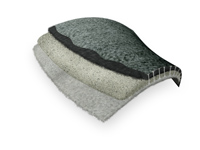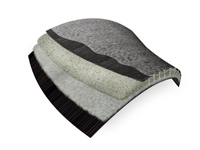Sodium bentonite-based GCLs provide an excellent hydraulic barrier in applications where leachate in direct contact with the GCL is relatively non-aggressive, or in composite lining applications where the GCL is overlain by a thermally welded geomembrane and hydrates from uptake of innocuous moisture from the subgrade
Depending on the site conditions, the interface and internal shear strength requirements may vary. BENTOMAT is available in a non-reinforced configuration to allow maximum value for your site. It is also available with the industry leading highest needle-punch density providing maximum performance when high internal shear strength is needed.
|
|
|
STANDARD REINFORCED GCLs
 | DN
|
 | DN9
|
 | ST
|
 | STM
|
NON-REINFORCED GCLs
 | 200R
|
COMPOSITE LAMINATE GCLs
 | CLT
|
 | CL
|
 | 600CL (non-reinforced)
|